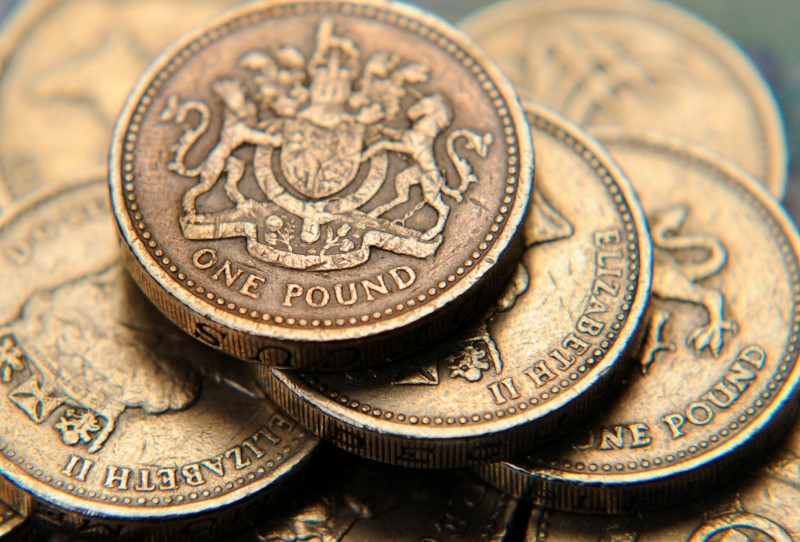(This story first published on March 28, was refiled to amend headline)
By Patrick Graham
LONDON (Reuters) - While banks warn Britain's European Union divorce could drive the pound below $1.20, their option traders have cut the cost of insuring against further falls in the two years it has left inside the bloc.
A company wanting to insure its revenues or financial investments against further falls in the currency could pay 4.8 percent on Tuesday, back to late 2015 levels, for "put" options that start generating a profit if sterling falls to $1.20.
That compares to forecasts from major banks that range from $1.06 to almost $1.50, meaning a move in either direction of almost another 20 percent from current levels of around $1.25.
British Prime Minister Theresa May lodges Britain's official intent to leave the bloc on Wednesday and London's currency brokers say the pound's dramatic fall to levels not seen since the mid-1980s has made companies and ordinary Britons more fearful about sterling than at any time in recent memory.
In the heart of London's Canary Wharf financial district, dollars and euros were in high demand or sold out at several retail currency kiosks on Tuesday.
"Our average daily volume was up about 50 percent yesterday. We have people who are buying a house in Spain taking half of the amount out now just to make sure they lock in at these rates," Mark Horgan, chief executive of corporate and consumer foreign exchange firm Moneycorp, said.
And the use of currency hedging products by small businesses has risen by almost 60 percent since Britain voted to leave the EU in June, banking researchers East and Partners say.
Horgan, whose business tends to be focused on smaller firms and individuals exchanging money for personal needs, says for most that means a simple forward contract that essentially commits the user to paying the difference between UK interest rates and those in the euro zone or the United States.
But corporate customers are less concerned than last year.
"There is a feeling that Brexit is priced in and a lot of companies have got their heads around it now and are planning properly," he said, while adding:
"The big risk for me is that we get a precipitated walk out in the first stages of the talks. That could make it a long hard summer for sterling."
STRADDLE HYPE
Allowing for the gap between UK interest rates and their U.S. equivalents, options market insurance against a rise in sterling is relatively more expensive.
An at-the-money "call" option cost 7.1 percent on Tuesday.
That adds up to an expensive 12 percent for a "straddle", the options structure hedge funds and other major investors use to bet on general volatility in the currency.
Mark Farrington, a portfolio manager with London-based hedge fund Macro Currency Group, argues that sterling's fall has been driven by excessive hyping of the risks by the government, the Bank of England and other institutions.
"You had a very concerted effort to terrify everyone. I view these levels around 1.20 as artificial, not just on the back of the political turbulence but also the artificial spin that we should now see change," Farrington said.
The playing field, whether it be for big pension funds with UK investments, food importers or Britons hoping for a summer holiday in Europe, does seem to have shifted.
Bank researchers say that fair value views of sterling have fallen from around $1.50 two years ago, to between $1.30 and $1.40.
Reuters most recent polling, covering expectations out to a year, runs from German banks predicting a fall to around $1.05 to Investec's $1.35. British banking majors show a tighter range - from $1.10 to $1.31. [GBP/POLL]
"Forwards do not show you much. The option market skew is probably the bigger indicator," Richard Benson, head of portfolio management at currency fund Millennium Global, said.

"Buying the ATM GBP put at 4.8 percent, the positive carry makes it look interesting. The break-even of buying that put is $1.20, two weeks ago the market was panicking we would break $1.20 by the end of the week."